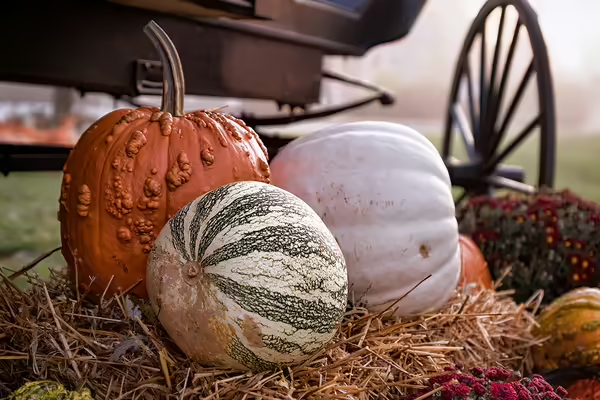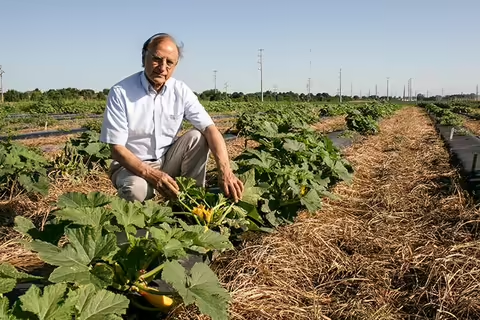
Few of us stop to wonder how that slice of pumpkin pie made it onto our plate, but if it weren't for the Illinois pumpkin industry and plant pathologist and Extension specialist Mohammad Babadoost, the classic fall dessert might not be on the menu at all.
Back in 1999 and 2000, a devastating pumpkin disease threatened to wipe out the crop in Illinois - the top pumpkin-producing state in the nation - but Babadoost came up with solutions to not only prevent the industry's collapse, but to help it grow.
Today, the pumpkin disease continues to rear its head, but Babadoost is there to fight back. And he reports the crop looks good in 2022.
"We started a timely pumpkin season in 2022. As I do every year, I had trials on canning pumpkin at a commercial field near Pekin and at the UIUC Vegetable Research Farm in Champaign. Phytophthora blight, caused by Phytophthora capsici, is still the most important disease of canning pumpkins. Moisture is vital for development and spread of Phytophthora blight, but June and July were a bit drier than the past.
Also, we have developed an effective management of Phytophthora blight. Combine these factors together, and we had very limited loss to Phytophthora capsici. In addition, we did not get downy mildew disease in Illinois, which comes from the southeastern states. So, we had very good yield and canning product in Illinois this year," Babadoost says. "Thus, everyone can have as many pumpkin pies as they wish."
Read more from the College of ACES
Photo: Babadoost with pumpkin plants at University of Illinois Urbana-Champaign Vegetable Research Farm.
